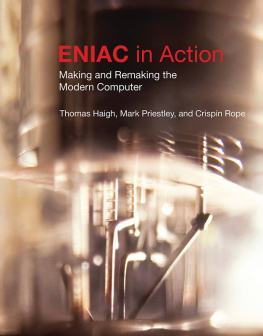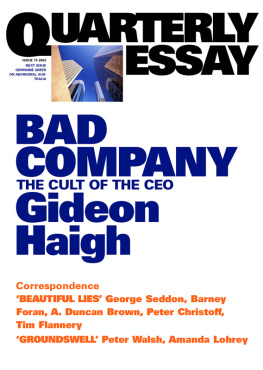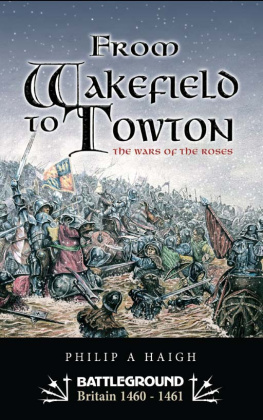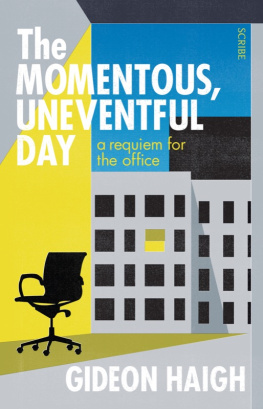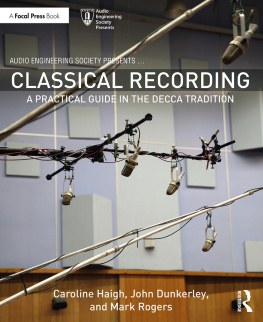Thomas Haigh - ENIAC in Action
Here you can read online Thomas Haigh - ENIAC in Action full text of the book (entire story) in english for free. Download pdf and epub, get meaning, cover and reviews about this ebook. year: 2016, genre: Politics. Description of the work, (preface) as well as reviews are available. Best literature library LitArk.com created for fans of good reading and offers a wide selection of genres:
Romance novel
Science fiction
Adventure
Detective
Science
History
Home and family
Prose
Art
Politics
Computer
Non-fiction
Religion
Business
Children
Humor
Choose a favorite category and find really read worthwhile books. Enjoy immersion in the world of imagination, feel the emotions of the characters or learn something new for yourself, make an fascinating discovery.
- Book:ENIAC in Action
- Author:
- Genre:
- Year:2016
- Rating:4 / 5
- Favourites:Add to favourites
- Your mark:
- 80
- 1
- 2
- 3
- 4
- 5
ENIAC in Action: summary, description and annotation
We offer to read an annotation, description, summary or preface (depends on what the author of the book "ENIAC in Action" wrote himself). If you haven't found the necessary information about the book — write in the comments, we will try to find it.
ENIAC in Action — read online for free the complete book (whole text) full work
Below is the text of the book, divided by pages. System saving the place of the last page read, allows you to conveniently read the book "ENIAC in Action" online for free, without having to search again every time where you left off. Put a bookmark, and you can go to the page where you finished reading at any time.
Font size:
Interval:
Bookmark:
William Aspray and Thomas J. Misa, editors
Janet Abbate, Gender in the History of Computing: Reimagining Expertise, Opportunity, and Achievement through Womens Lives
John Agar, The Government Machine: A Revolutionary History of the Computer
William Aspray and Paul E. Ceruzzi, The Internet and American Business
William Aspray, John von Neumann and the Origins of Modern Computing
Charles J. Bashe, Lyle R. Johnson, John H. Palmer, and Emerson W. Pugh, IBMs Early Computers
Martin Campbell-Kelly, From Airline Reservations to Sonic the Hedgehog: A History of the Software Industry
Paul E. Ceruzzi, A History of Modern Computing
I. Bernard Cohen, Howard Aiken: Portrait of a Computer Pioneer
I. Bernard Cohen and Gregory W. Welch, editors, Makin Numbers: Howard Aiken and the Computer
Thomas Haigh, Mark Priestley, and Crispin Rope, ENIAC in Action: Making and Remaking the Modern Computer
John Hendry, Innovating for Failure: Government Policy and the Early British Computer Industry
Michael Lindgren, Glory and Failure: The Difference Engines of Johann Mller, Charles Babbage, and Georg and Edvard Scheutz
David E. Lundstrom, A Few Good Men from Univac
Ren Moreau, The Computer Comes of Age: The People, the Hardware, and the Software
Arthur L. Norberg, Computers and Commerce: A Study of Technology and Management at Eckert-Mauchly Computer Company, Engineering Research Associates, and Remington Rand, 19461957
Emerson W. Pugh, Building IBM: Shaping an Industry and Its Technology
Emerson W. Pugh, Memories That Shaped an Industry
Emerson W. Pugh, Lyle R. Johnson, and John H. Palmer, IBMs 360 and Early 370 Systems
Kent C. Redmond and Thomas M. Smith, From Whirlwind to MITRE: The R&D Story of the SAGE Air Defense Computer
Alex Roland with Philip Shiman, Strategic Computing: DARPA and the Quest for Machine Intelligence, 19831993
Ral Rojas and Ulf Hashagen, editors, The First Computers: History and Architectures
Dinesh C. Sharma, The Outsourcer: A Comprehensive History of Indias IT Revolution
Dorothy Stein, Ada: A Life and a Legacy
John Vardalas, The Computer Revolution in Canada: Building National Technological Competence, 19451980
Maurice V. Wilkes, Memoirs of a Computer Pioneer
Thomas Haigh, Mark Priestley, and Crispin Rope
The MIT Press
Cambridge, Massachusetts
London, England
2016 Massachusetts Institute of Technology
All rights reserved. No part of this book may be reproduced in any form by any electronic or mechanical means (including photocopying, recording, or information storage and retrieval) without permission in writing from the publisher.
eISBN 9780262334419
Set in Sabon by Toppan Best-set Premedia Limited. Printed and bound in the United States of America.
Cataloging-in-publication information is available from the Library of Congress.
10987654321
d_r0
dedicated to Douglas R. Hartree, who could do a great deal with ten million multiplications
This project was generously funded by Mrs. L. D. Ropes Second Charitable Settlement. With this support we were able to bring together the skills and resources to comb through mountains of archival materials and dig deep into the world of early computing practice. Peter Sachs Collopy did most of the work needed to obtain archival documents from the collections at the University of Pennsylvania. Nate Wiewora, Alan Olley, and Stephanie Dick all procured specific documents from other collections. Susan Abbey provided handwriting analysis services to clarify the authorship of numerous documents. Haighs research assistant, Ann Graf, carefully reviewed the manuscript and verified citations.
Thanks are owed to archivists and curators Susan Dayall at Hampshire College, Lynn Catanese at the Hagley Museum and Library, Susan Hoffman and Arvid Nelsen at the Charles Babbage Institute, Nancy R. Miller at the University of Pennsylvania, Valerie-Ann Lutz and the other members of the archival staff at the American Philosophical Society, Debbie Douglas at the MIT Museum, David E. Pfeifer at the Institute for American Thought at Indiana UniversityPurdue University Indianapolis, and members of the staff of the Library of Congress Manuscripts Reading Room.
Peggy Kidwell of the National Museum of American History was particularly helpful in pointing us toward the earliest known use of the term stored program and in helping us clarify the locations and the ownership of many surviving parts of ENIAC. Kim D. Todd at the Jean Jennings Bartik Computing Museum provided several images, including what may be the earliest surviving record of an ENIAC set-up used in practice. George Dyson and Marina von Neumann Whitman shared with us unpublished material from the latters personal collection of papers concerning Klara von Neumann. Anne Fitzpatrick, Steve Aftergood, Robert Seidel, J. Arthur Freed, and Alan B. Carr all did what they could to help us navigate the maze of restrictions surrounding access to historical materials from Los Alamos, though alas our Freedom of Information Act requests have yielded no fruit more than two years after they were submitted.
William Aspray, Jeff Yost, Atsushi Akera, Doron Swade, Bill Mauchly, Paul Ceruzzi, and Martin Campbell-Kelly kindly answered our questions on specific topics and shared their perspectives on computing in the 1940s.
Some material from the project was initially published in IEEE Annals of the History of Computing in article form. We benefitted from suggestions made by anonymous reviewers and by those who discussed the draft at the informal Workshop on Early Programming Practice organized by Gerard Alberts and Liesbeth De Mol.
Portions of chapters 6 and 11 were previously published in Haigh, Priestley, and Rope, Reconsidering the Stored Program Concept, IEEE Annals of the History of Computing 36, no. 1 (2014): 417 and in Haigh, Stored Program Concept Considered Harmful: History and Historiography, in The Nature of Computation. Logic, Algorithms, Applications, edited by Paola Bonizzoni, Vasco Brattka, and Benedikt Lwe (Springer, 2013).
Portions of chapters 8 and 9 were previously published in Haigh, Priestley, and Rope, Engineering The Miracle of the ENIAC: Implementing the Modern Code Paradigm, IEEE Annals of the History of Computing 36, no. 2 (2014): 4159.
Portions of chapters 7 and 11 were previously published in Haigh, Priestley, and Rope, Los Alamos Bets on ENIAC: Nuclear Monte Carlo Simulations, 194748, IEEE Annals of the History of Computing 36, no. 3 (2014): 4263.
A number of people make repeated but short appearances in this book, several of them under multiple names because of marriage. To minimize confusion without making endless re-introductions, we have prepared this list.
Barnes, Gladeon MarcusChief of Research and Development for the Ordnance Department, and therefore responsible for Aberdeen Proving Ground, of which the Ballistic Research Laboratory (BRL) was a part. Represented the Ordnance Department at the ENIAC launch event.Bartik, JeanMarried name of Betty Jean Jennings.Bilas, FrancesOne of the first of the ENIAC operators selected in 1945, having worked as a computer and differential analyzer operator for the BRL since 1942. Married Homer Spence.Brainerd, John GristA senior member of the faculty of the University of Pennsylvanias Moore School of Electrical Engineering who was designated director of the ENIAC project.Burks, Arthur W.A mathematician turned philosophy PhD turned ENIAC engineer who made substantial contributions to ENIACs design, produced the first detailed plans for the trajectory computations, and later wrote extensively on the early history of electronic computing.Clippinger, RichardA mathematician who was employed at the BRL from 1944 to 1952. He became involved with ENIAC in 1946 as a user interested in simulating supersonic wind flow, and later took part in planning the conversion of ENIACs programming system.Cunningham, LelandA Harvard University astronomer who worked at the BRL during World War II. He helped to shape ENIAC through its design process and served on the BRLs Computations Committee to plan ENIAC applications.Dederick, Louis S.A senior BRL civilian scientist, appointed head of the BRLs Computing Laboratory in 1945. He retired from the laboratory in 1953.Eckert, John Presper, Jr.A young electronic engineer who led the detailed design and construction of ENIAC as laboratory chief. One of the two ENIAC inventors credited in its patent. Left the Moore School in 1945 to co-found the first computer company.Gillon, PaulA computational specialist and member of the BRL staff who was responsible for the BRLs joint development of differential analyzers with the Moore School. Herman Goldstines direct supervisor during the early part of ENIAC development, he was later a supporter of the project from within the Armys Office of the Chief of Ordnance.Goldstine, Adele KatzA mathematician who trained and recruited human computers and who in 1947 drafted an early plan for the conversion of ENIAC to its new programming mode. Wife of Herman Goldstine.Goldstine, Herman HeineA mathematician assigned as the BRLs liaison to the Moore School, initially to oversee the human computers working there. He was the Armys primary liaison to the ENIAC project and was deeply involved in its daily progress. Later he worked with John von Neumann at the Institute for Advanced Studies in Princeton. Husband of Adele Goldstine.Holberton, Frances Elizabeth BettyMarried name of Elizabeth Betty Snyder.Holberton, JohnA BRL staff member who was selected in 1945 to head ENIAC operations, which he did during its time at the Moore School and after its move to Aberdeen. Married Elizabeth Betty Snyder.Jennings, Betty JeanOne of the initial cohort of ENIAC operators hired by the BRL in 1945. Leader in 194748 of a contract programming group that worked on the plans to convert ENIAC to its new programming mode. Became Jean Bartik upon marriage in 1946.Lehmer, Derrick HenryA mathematician with a particular interest in prime numbers. He spent part of World War II at the BRL and served on the computations committee responsible for planning ENIAC applications.Lichterman, RuthHired by the BRL as a human computer, she became one of the first ENIAC operators in 1945. She became Ruth Teitelbaum upon marriage.Mauchly, John W.A physicist and a member of the Moore Schools faculty who instigated the ENIAC project. One of the two ENIAC inventors credited in its patent. Left the Moore School in 1945 to co-found the first computer company.McNulty, Kathleen Rita KayHired by the BRL as a computer in 1943, she operated the differential analyzer before becoming one of the initial cohort of ENIAC operators in 1945. Married John Mauchly in 1948.Metropolis, Nicholas ConstantineA physicist and Manhattan Project veteran who remained active after World War II in developing computational methods at Los Alamos while on the faculty of the University of Chicago. In 1948 he returned to Los Alamos, where he led development of its first electronic computers. He reconfigured ENIACs programming mode in 1948 immediately before the first computerized Monte Carlo simulations were run.Pender, HaroldDean of the Moore School, where ENIAC was created under contract to the BRL.Sharpless, Thomas KiteAn ENIAC design engineer, nearly always referred to as T. Kite Sharpless.Simon, Leslie E.A scientist who served as director of the BRL and was responsible for overseeing ENIACs construction and use.Snyder, Frances Elizabeth BettyOne of the initial cohort of ENIAC operators hired by the BRL in 1945. Left the BRL in 1948. Married John Holberton.Spence, HomerBegan maintenance work on ENIAC in 1945 as an enlisted soldier. Returned as a civilian employee to the BRL, where he then oversaw maintenance work. Married Frances Bilas in 1950.Teller, EdwardPhysicist, Manhattan Project veteran, and co-inventor of the hydrogen bomb.Travis, IrvenMoore School faculty member since 1931. In 1940 proposed construction of an electronic differential analyzer with close parallels to the later ENIAC proposal. After returning to the Moore School from a wartime assignment, he oversaw contract research, including ENIAC and EDVAC work.Ulam, Stanislaw M.Physicist, Manhattan Project veteran, one of the originators of the Monte Carlo method, and co-inventor of the hydrogen bomb.von Neumann, JohnA mathematician who was involved in the ENIAC project from approximately August 1944 on. Helped to shape plans for its successor, EDVAC, as expressed in the hugely influential First Draft of a Report on the EDVAC. Also credited with the idea for converting ENIAC to EDVAC-like operation, he was responsible for bringing several teams from Los Alamos to Philadelphia, and later to Aberdeen, to work with ENIAC. Husband of Klara von Neumann.von Neumann, KlaraCoded and helped to run a series of Monte Carlo simulations run on ENIAC for Los Alamos between 1948 and 1950. Wife of John von Neumann.Font size:
Interval:
Bookmark:
Similar books «ENIAC in Action»
Look at similar books to ENIAC in Action. We have selected literature similar in name and meaning in the hope of providing readers with more options to find new, interesting, not yet read works.
Discussion, reviews of the book ENIAC in Action and just readers' own opinions. Leave your comments, write what you think about the work, its meaning or the main characters. Specify what exactly you liked and what you didn't like, and why you think so.

